Welcome to the fourth BLOG of the Fizionova Physiotherapy Center!
As many already know, our chief therapist Nemanja Marjanović will once again guide you through the explanation of the injury and this painful condition, a detailed explanation of the therapy, as well as the presentation of preventive exercises. The topic of this vlog is cervical syndrome, which is quite a broad topic, which can be talked about extensively, but we will try to briefly convey the most important information.
What is a cervical syndrome?
Just so as not to confuse our readers - the cervical part of the spine is the neck part of the spine. Cervical syndrome can first be divided into: - cervicocephalic and - cervicobrachial syndrome. The division that can further be made within cervical syndrome is: - spondylosis, - dysarthrosis, - uncarthrosis, - facet syndromes and - one of the more severe problems is central myelopathy. Also, unavoidable issues that occur in both thoracic and lumbar syndrome are protrusions and disc herniation of the cervical spine.
A video with preventive exercises and an explanation of therapy in our center:
In the video, you can find answers to all important questions related to cervical syndrome and what the treatment process in our center looks like.
NECK AND THE OCCIPITAL PAIN - A DISEASE OF THE CONTEMPORARY AGE
Modern lifestyle is the most common cause of cervical syndrome in young people and it starts appearing in people as early as 20 and 25 years of age.
Neck and occipital bone pain can indicate a problem with tendons, muscles, ligaments and other soft tissues located in the neck area. Very sensitive nerves, and narrowing between the vertebrae in the neck, can also be the cause of the pain you suffer. Pain in the neck and back of the head that goes down the shoulder and arm is very common but the intensity of that pain can vary.
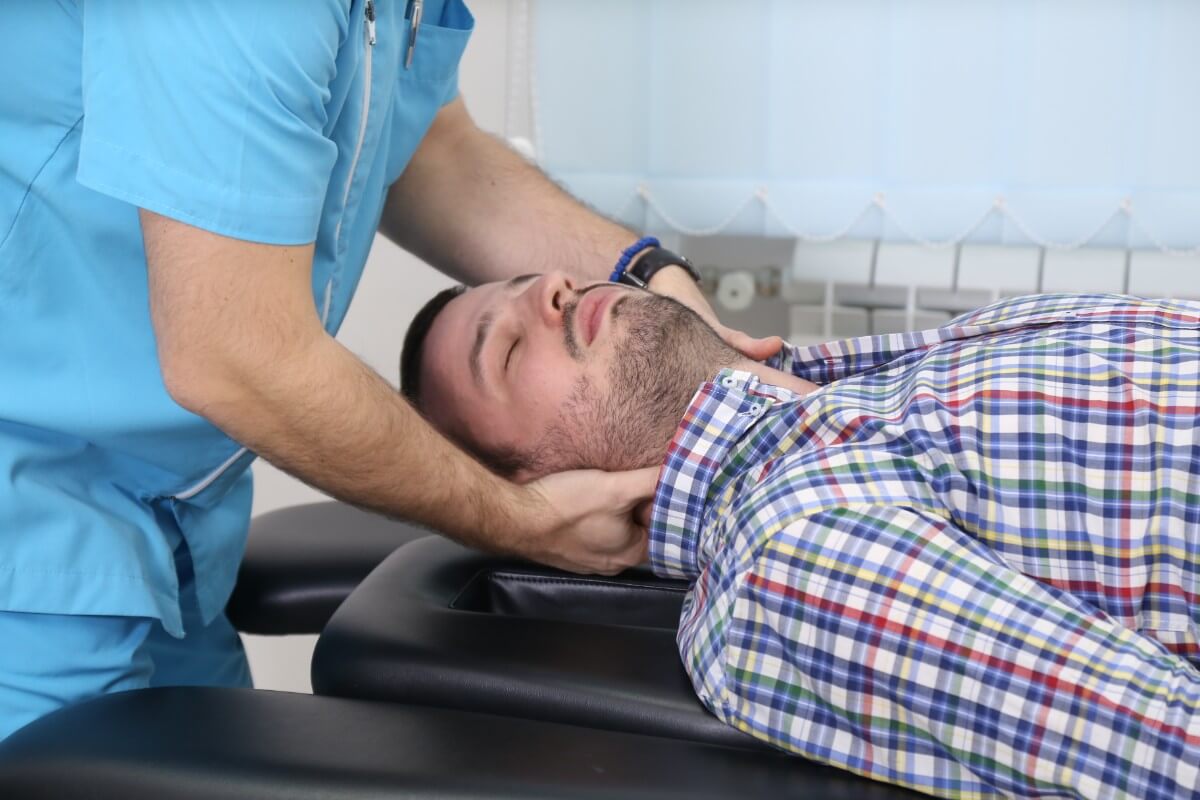
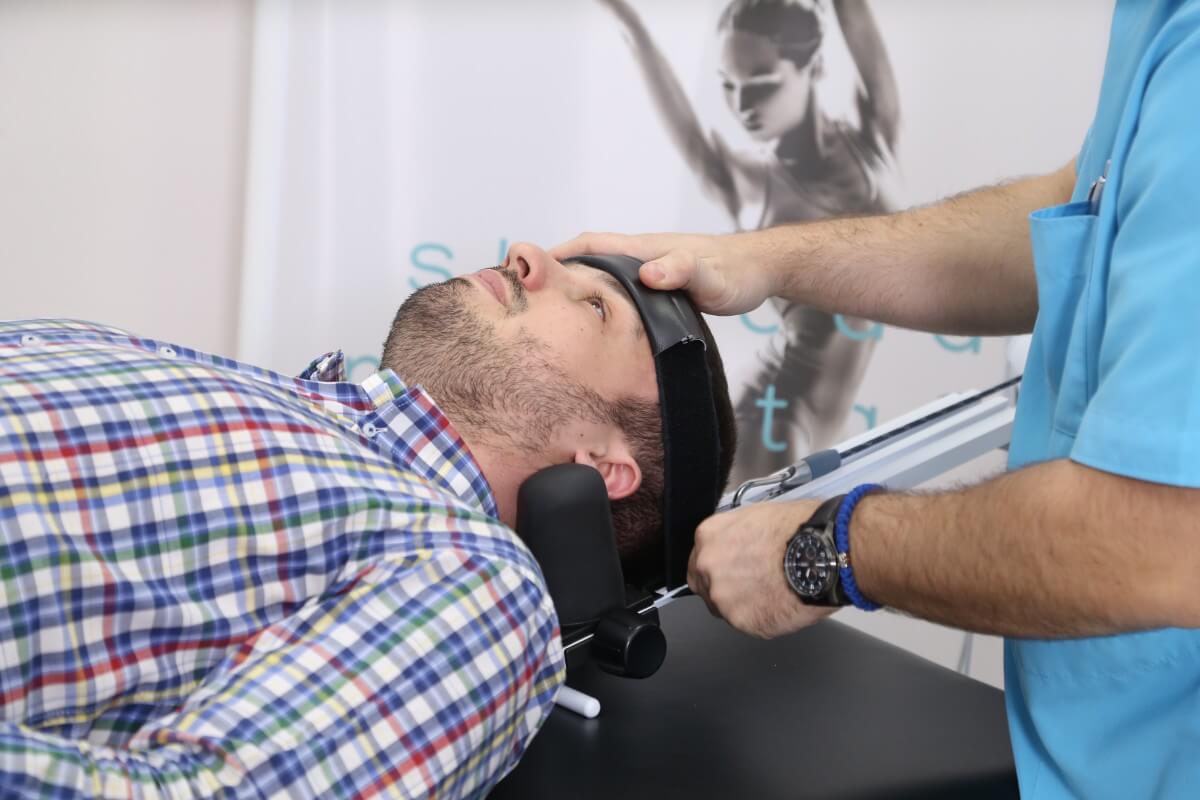
Cervical Herniated Disc and cervical syndrome
With a herniated disc in the neck, pain is most often manifested in the neck, and it may or may not spread through the head, shoulder and arm. If disc herniation has progressed, spinal cord damage can be noticed, but also nerve damage such as myelopathy and radiculopathy. In these cases, one also can experience numbness and weakness in the arm or leg. Symptoms of the disc herniation of the neck can be frequent dizziness and instability, especially during certain body and neck movements.
Other diseases whose symptoms are pain in the neck and the occipital
In addition to disc herniation of the neck, similar sensations (pain that goes from the occipital, down the shoulder and arm) can be caused by various other diseases such as occipital neuralgia, facet syndrome, myofascial muscle pain, nerve entrapment syndrome and others. All these diseases, as well as many others, may have identical symptoms as disc herniation, so in order to determine what it is, an appropriate diagnosis is needed - most often that diagnosis involves magnetic resonance imaging of the spine, but also gathering a detailed medical history and monitoring the condition. This is because knowing the exact cause of the disease is imperative to be able to apply treatment that is timely and adequate.
Stiff neck and other symptoms of cervical syndrome
In order for our readers to more easily recognize the problems and pain they are experiencing, we will start from a higher level of the cervical part, i.e., the cervicocephalic syndrome.
The cervicocephalic syndrome manifests in changes from the level of Atlas, the first vertebra, to the level of the C4 vertebra. What’s characteristic of these changes in the first four vertebrae are the disc protrusions associated with headaches, tension headaches in the occipital, as well as tinnitus.
A very common and unavoidable symptom is the appearance of lights in front of the eyes. Many times, patients confuse these symptoms and associate them with high blood pressure.
In another example, we will show how complex the cervical syndrome itself is, through a cervicobrachial syndrome where there is a problem from the C4 vertebrae to Th1 (the first thoracic vertebra).
Patients express all the symptoms of cervicobrachial syndrome by complaining about: their hand tingling, not having the same freedom of movement as in the other hand, and shoulder pain, so patients, not recognizing all these symptoms, associate it with a shoulder problem.
The tingling and paresthesias that appear along the arms initially appear only at night and people are usually awakened by morning pain or before dawn when the tingling intensifies, and this is due to the fact that then the discus is hydrated and filled with water.
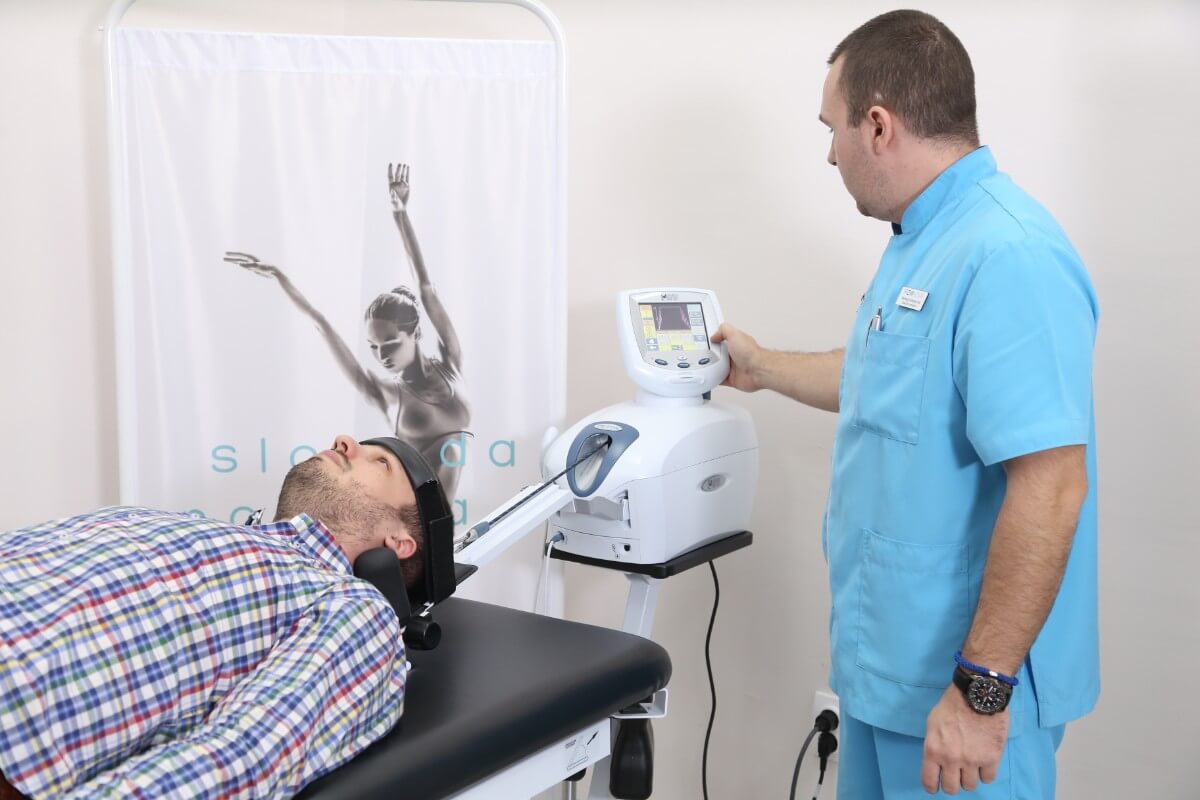
Why do we experience neck pain and what most commonly causes it?
You can see the causes of pain, as well as all the details related to the treatment in our Center in the video clip.
Cervical syndrome – types:
Cervical syndrome can be categorized based on the segments of the vertebra where the problem occurs:
1. cervicocephalic – from the first vertebra (Atlas) to the C4 vertebra
2. cervicobrachial – from C4 vertebra to Th1 vertebra
The claim that cervical syndrome is a disease of the modern age is confirmed by the fact that the degenerative changes that occur in the spine now appear in younger people around 20 to 25 years, which was not characteristic before because such changes are not expected before 40 to 45 years.
Unfortunately, the modern way of life is to blame for all this: mobile phones, tablets, computers, work in the IT sector… People with such a job description are most often affected.
A large number of patients very rarely go to the doctor in the most acute phase.
They usually try drug therapy to solve it, or try certain gels…
And then they arrive to a subacute and chronic phase. Then the problem intensifies and the situation becomes more difficult.
What characterizes the most difficult phase is the chronicity itself, which leads to neuropathy of the hand itself.
Unfortunately, most patients only visit the doctor in this chronic phase, when they notice that the feeling in one hand is totally different in relation to the other.
That is why it is extremely important to react as soon as possible.
Neck and head pain - preventive exercises
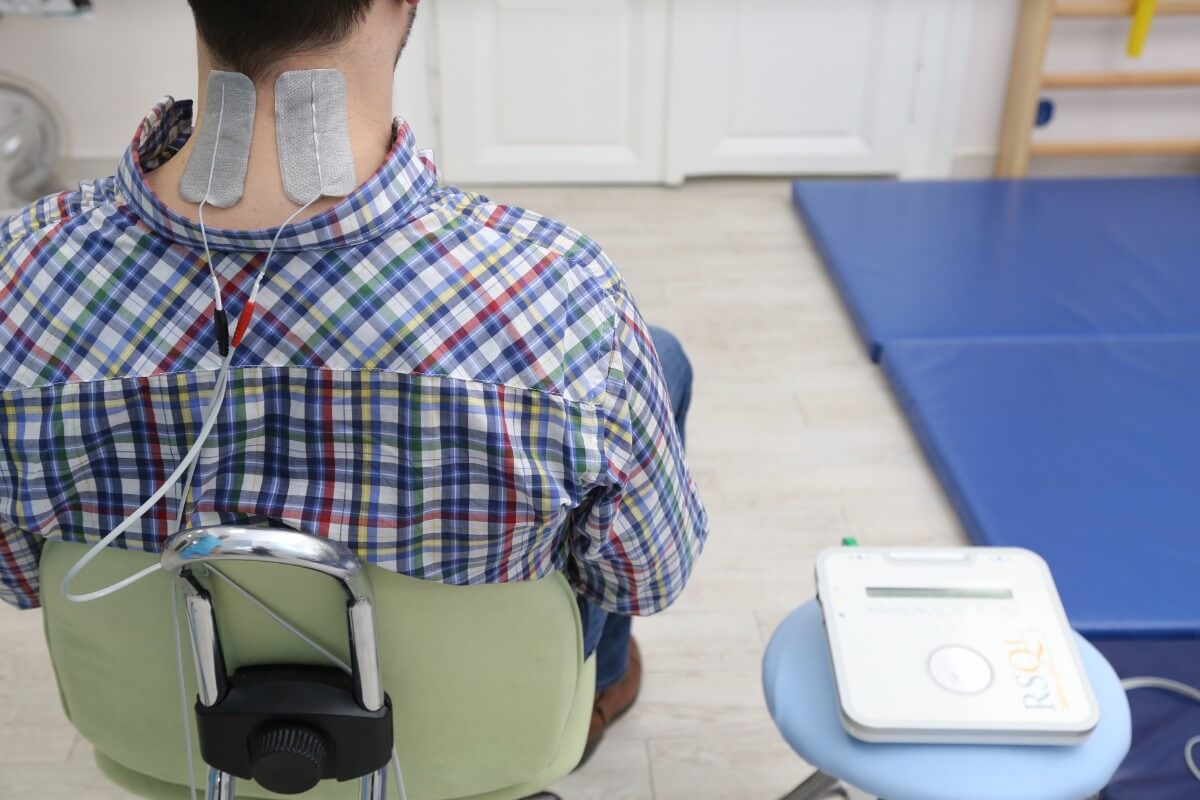

As the modern way of life makes us more and more sedentary, and regardless of whether it is driving, or a computer job, your spine is in an unnatural position, which increases cervical lordosis and which is one of the main causes of your problems.
In order to prevent these problems yourself or at least reduce them as much as possible, Nemanja will show you a couple of protective exercises in the video, which you can do on your own, without any special conditions. You can even do them at work, and they require your 10 minutes.
We will share with you some preventive exercises, which you can see in the video:
- exercise 1 – pressure on the chin
- exercise 2 - pressure on the forehead
- exercise 3 - pressure on the lower part of the chin
- exercise 4 - lowering the head to the shoulder
- exercise 5 - pushing the scalp backwards
You can do each exercise in 5-7 repetitions. Repeat all exercises in 2 series.
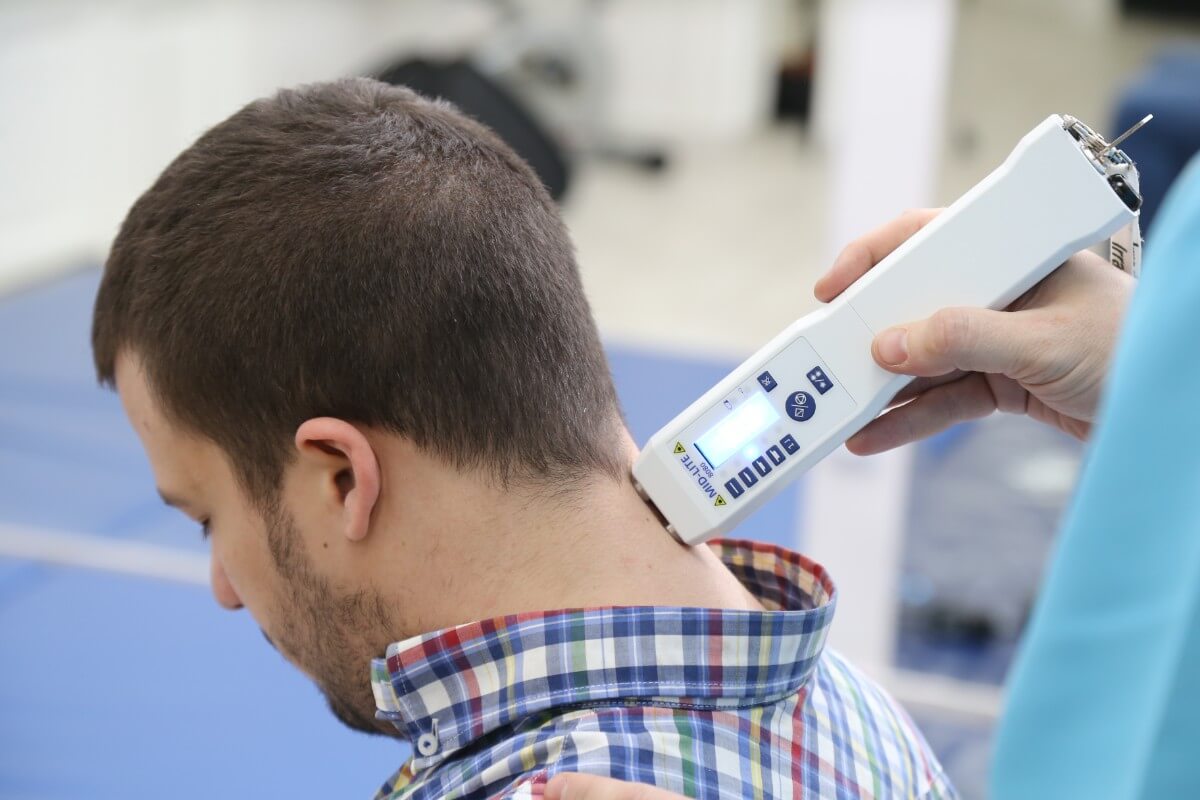

What does the recovery and treatment of cervical syndrome look like in our center?
At the Fizionova Center, based on a diagnostic examination (with an MRI scan that you bring), with standardized examinations and tests that we conduct, we determine the problem in question, what is the degree of damage and based on that, we determine further therapeutic procedure. In our center, the problem of the cervical syndrome is treated by Protocol number 2, which includes:
- Decompression of the cervical spine Chattanooga Triton DTS device.
- RSQ1 treatment for which we are unique in the Balkans and which is extremely important, because it speeds up the recovery (21 minutes of applying this device replaces an hour and a half of standard therapy). In the acute phase, it is only applied through relaxation, and after the second/third therapy, it also goes through kinesitherapy treatment with the RSQ1 device.
- Hans Tim mild current treatment that relaxes the deep muscles of the neck.
- The next procedure that is applied is combination therapy, where we apply Tens and sonophoresis, which is used in neuropathies. If it’s for cervicobrachial syndrome, it will go along the whole arm, and if it is for cervicocephalic, we will include the shoulder-scapular part.
- Salus Talent electromagnetic stimulator, where we also work with lower frequencies in the acute phase, and as time and recovery progress, we increase the frequency.
- An unavoidable therapeutic procedure for this problem is the application of the cold Irradia laser.
- And as the last procedure, very often when we have a spasm of the paravertebral muscles and trapezius, hypobaric therapy is applied through suction cups.
SCHEDULE A PHYSIATRIST'S EXAMINATION
Dr Jelena Kluz-Đurđević, a specialist in physical medicine
After a conversation with the patient, Dr. Jelena will conduct an examination to obtain a more comprehensive view of your health status, helping to determine whether it's an injury or a diagnosis.
The examination lasts for 30 minutes and includes:
Schedule a specialist examination by calling 011 2100 588 for the cost of 4,000 RSD.
